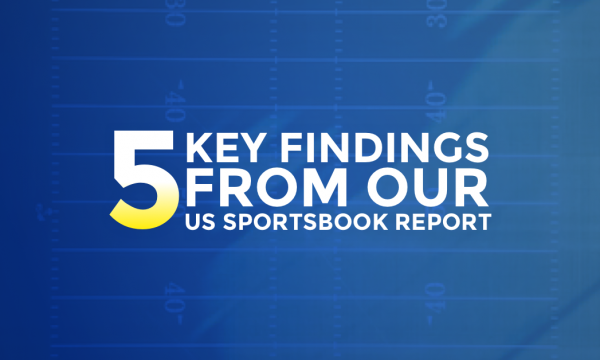We asked members of our team what they felt were the big things that they will be dealing with in the New Year. What challenges will brands face? What are the game-changers and just where are the opportunities for brands in 2014?
Content for people, not for the sake of it.
 Heather Healy, Creative Communications Director: “Lots of brands are creating lots of content right now. Some of that content is incredible, mind blowing and shared-all-over-the-internet. Some of it is content that exists for no real reason other than to achieve links to further an SEO campaign.
Heather Healy, Creative Communications Director: “Lots of brands are creating lots of content right now. Some of that content is incredible, mind blowing and shared-all-over-the-internet. Some of it is content that exists for no real reason other than to achieve links to further an SEO campaign.
“Brands will stop doing the latter and always aim for the former, by creating content that considers the consumer first and at a pace that is acceptable to a consumer, which will thankfully mean the death of the “one infographic a month” quota. The brands that put consumers first will get the best reach, the volume of discussion and the quality of links to further their SEO campaigns.”
From responsive design to responsive content.
 Nathan Aucott, Web Designer: “As a natural progression from responsive web design, we are likely to see a greater use of device sensors and server side scripts to deliver entirely different content sets to specific user situations.
Nathan Aucott, Web Designer: “As a natural progression from responsive web design, we are likely to see a greater use of device sensors and server side scripts to deliver entirely different content sets to specific user situations.
“Geolocation and Wi-Fi networks are likely to be adopted by brands to identify a user’s location and, for example, deliver store-specific content that enhances the high street experience for their customers. Bus or train operators may focus their efforts on ultra-fast layouts and content to deliver content quickly, without clutter, to users in a short timeframe.
“With smart TVs now working their way into more and more homes, expect to see a considerable growth in content for internet enabled TVs.”
Following users offline and across devices.
Tony Booth, Head of Paid Search: “Google has started to measure the attribution of PPC activity on other channels based on their users that are signed into Google accounts directly in the interface in the form of estimated conversions. This combines your last click sales in AdWords with a number attributed to PPC activity decided upon by Google.
“This will help advertisers realise the true value that each device is having on their campaign and ensure that the customer journey is heavily optimised and relevant.’’
Google finally clamps down on cynical backlinks.
 Jonny Artis, Head of SEO: “Google has long warned of the potential pitfalls of engaging in cynical and non-compliant link acquisition tactics, however the harsh reality for the search giant is that it has for many years struggled to comprehensively and consistently tackle the issue. Whilst the number of sites managing to rank on questionable link strategies has fallen, there are a few survivors as we enter the twilight of 2014.
Jonny Artis, Head of SEO: “Google has long warned of the potential pitfalls of engaging in cynical and non-compliant link acquisition tactics, however the harsh reality for the search giant is that it has for many years struggled to comprehensively and consistently tackle the issue. Whilst the number of sites managing to rank on questionable link strategies has fallen, there are a few survivors as we enter the twilight of 2014.
“It looks increasingly unlikely however that those hardy few will see out 2014 intact unless material efforts are made to repent and clean up their acts, as ill thought out and low-rent paid links are rendered about as useful as a snooze button on a smoke alarm.
“We’re going to see an even bigger emphasis on how backlinks are derived and a lot of brands may well learn the difference between solicitation (a combination of good marketing and PR) and incentivisation (tantamount to the kinds of link buying tactics about to be resigned to the history books) the hard way. “
Big brands investing in big data…
 Phil McGuin, Head of Insight: “Apple’s recent acquisition of Topsy Labs could be a real step-change in the way that big brands use social insight to enhance their interactions with consumers.
Phil McGuin, Head of Insight: “Apple’s recent acquisition of Topsy Labs could be a real step-change in the way that big brands use social insight to enhance their interactions with consumers.
“For Apple, understanding how they are perceived across social networks could lead to some significant changes to the ways in which they engage with consumers across the many stages of the purchasing journey.
“Just how Apple is planning to use this data remains to be seen but where Apple leads, others tend to follow. I expect to see brands make a significant investment in customer data over the next 12 months to really get to know how consumers respond to them.
…and data analysts wrestling back control of web tracking.
 Jonny Briggs, Insights Solutions Manager: “With the release of Auto Event Tracking in Google Tag Manager, the development requirements for tracking website activity are getting fewer and fewer.
Jonny Briggs, Insights Solutions Manager: “With the release of Auto Event Tracking in Google Tag Manager, the development requirements for tracking website activity are getting fewer and fewer.
“This puts the power of web tracking in the hands of the data analysts, rather than the web developers, which makes it much easier for brands to get the key insights that can really refine their campaigns.
“What I am looking forward to seeing in 2014 is just how far Google will go to make web tracking easier and whether data analysts will actually use this functionality to its full potential.”
The growth of “human” brands.
Heather Healy: “We’ve seen brands show their human side in 2013. The Red Cross and their response to a “crisis” is the perfect example of this.
“Consumers sometimes forget that brands are human. Heck, even agencies forget this, but it’s our job to show the human side of brands where we can. Those are the brands that succeed best when it comes to social; by being human, fallible, prone to minor mistakes and forgivable.”
An explosion of search retargeting providers.
Tony Booth: “This is currently a buzz word in biddable media, with many new providers popping up and enabling advertisers to “re-target” users without a user having to ever visit the advertiser’s site previously.
“Google has only met advertisers halfway by enabling them to use the search network for re-marketing based on selected keywords, however this is only to users who have previously visited the advertiser’s site.
“I expect more providers to offer this service in 2014 and we will see more advertisers utilising this technology in order to grow brand and product interest in order to help attribute their traditional search offerings.”
Designers to lead the backlash against flat UI.
Nathan Aucott: “With flat UI design now completely mainstream, designers will start to look at other ways to lift their designs from the sea of clean lines and solid colours that now dominate the web.
"As CSS3 support becomes more widespread (even Internet Explorer is pulling its socks up), designers are beginning to enjoy the full use of their styling toolkits and 2014 will see a shift from Outlook-esque layouts to more appealing and exciting UI elements.”
The end of "SEO in silo".
Jonny Artis: “The role of interaction metrics, such as bounce rates and time on site, in Google’s algorithm has long been a point of discussion amongst the SEO community, but only recently have we begun to see firm indications that they have a substantive role to play in cementing a site’s ranking position.
“We are now starting to see a clear correlation between the average time spent on site (in seconds) and the ultimate ranking position of that site.
“Crucially, this means that SEO campaigns must expand to consider factors such as proposition, price point, user experience and technical efficiencies (such as load speed) which may, in the past, have been deemed the domain of entirely separate business units. Fundamentally, the expansion of one-dimensional strategies operated in silo to a ground-up, multi-faceted and fully integrated approach will be key to success in 2014.”
Want to know more? Get in touch and see how your campaigns could change in 2014.


